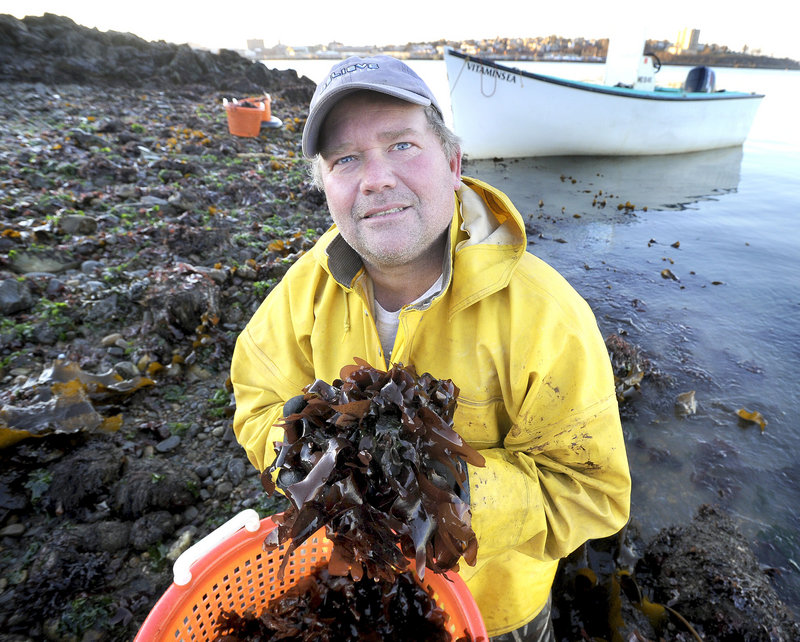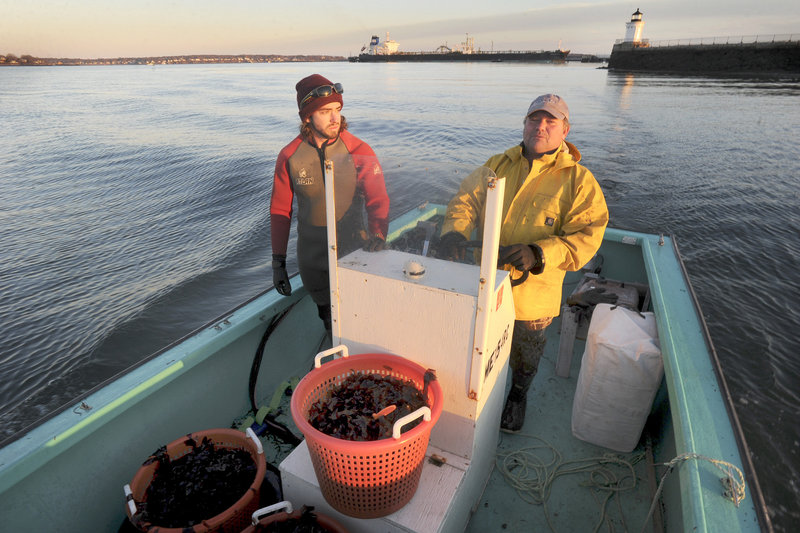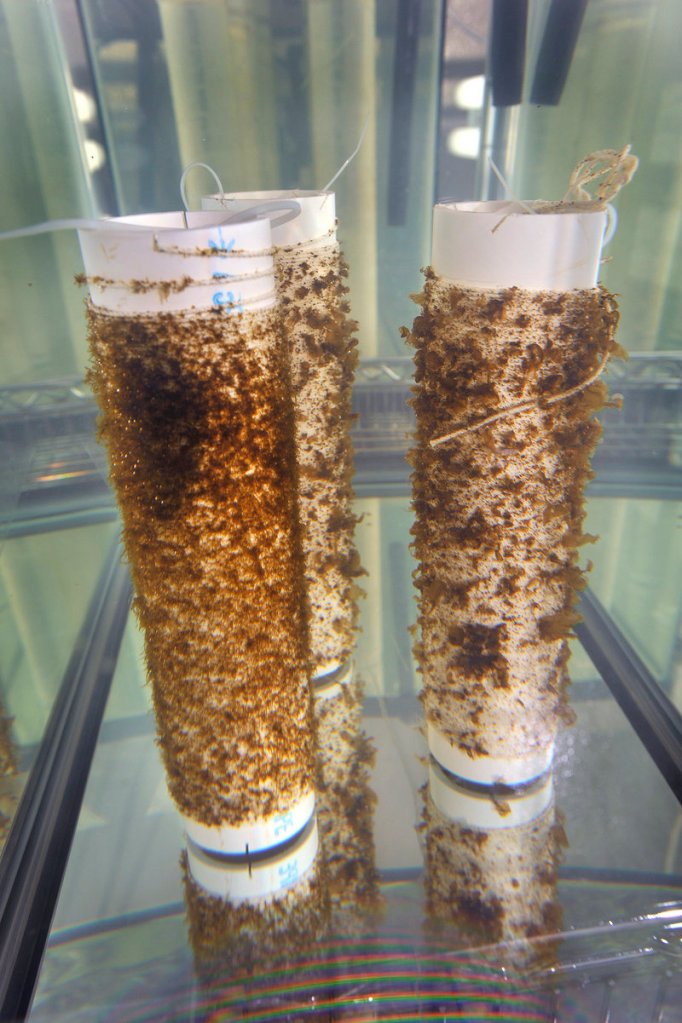SCARBOROUGH – In the waning days of his commercial fishing career, when Tom Roth needed to justify his purchase of another boat, he decided to harvest rockweed, which lobster businesses use for packing.
It was his first step into Maine’s growing seaweed industry.
Six years later, Roth and his wife, Kelly, preside over an expanding business. VitaminSea’s offerings now include energy bars studded with blueberries, dark chocolate and kelp, supplements for animals, a seasoning mix, and sea vegetables like alaria, konbu and dulse.
“This plant, there’s so much you can do with it if you just keep an open mind,” Tom Roth said.
The company contracted with a bakery recently to keep up with demand for its SeaCrunch bars, and picked up a West Coast distributor.
And it’s researching other products, including a lip balm made with kelp, and looking to expand its facility off Pine Point Road.
VitaminSea harvests edible seaweeds on the Maine coast and dries them in a leased space on Snow Canning Road, near the Scarborough Marsh. It plans to build a simple greenhouse in its gravel parking lot so it can dry more seaweed faster than it can indoors.
It’s not clear just how large Maine’s seaweed industry is. The Maine Seaweed Council hopes to hire someone to study the industry and put a value on it, said Shep Erhart, the trade group’s president and the founder of Maine Coast Sea Vegetables in Franklin.
When Erhart got started 40 years ago, he said, the seaweed drying on his clothesline was such a novelty that passing drivers would rubber-neck.
He said his business is now the largest employer in the Hancock County town. The company has 18 year-round employees and works with 40 to 50 harvesters who are independent contractors.
“Things have changed. Now we just have to keep the lid on the pot and make sure it doesn’t get out of control,” Erhart said.
Seaweed landings totaled 15.3 million pounds in 2011, according to preliminary data from the Maine Department of Marine Resources. That was up from 12.9 million pounds the previous year.
Rockweed accounts for an estimated 90 percent of that, with all other species combined making up the rest, said Linda Mercer, director of the department’s Bureau of Marine Science.
In addition to packing material, rockweed is turned into fertilizers, soil conditioners, animal food and supplements.
The value of the 2011 landings, unprocessed, was estimated at $421,720. Erhart said that figure doesn’t fully reflect the growing number of added-value products in the market.
The Maine Seaweed Council and the Department of Marine Resources are in the early stages of a multi-species seaweed management plan. Mercer said it is part of a larger effort by the department to develop management plans for all species.
A management plan already exists for Cobscook Bay, where seaweed became a hot issue after one of the world’s largest processing companies, Acadian Seaplants of Nova Scotia, began advertising for harvesters in 2000.
The plan divides the area into sectors, limits landings to 17 percent of the harvestable biomass and requires harvesters to submit plans to the state.
Erhart expects that seaweed aquaculture will play a larger role in complementing the wild harvest.
Ocean Approved was the first company in Maine to farm its own seaweed. Paul Dobbins and Tollef Olson started the kelp-farming company in 2006, and now operate three farms in Casco Bay and one in the Blue Hill Salt Pond. The kelp is sold frozen for use in slaw, salad and noodles.
The company is now researching kelp seed with a grant from the National Oceanic and Atmospheric Administration. The laboratory phase is winding down, and the company will create a manual that will be available to anyone, Dobbins said.
“We’re very interested in seeing a kelp-farming industry get off the ground. We’re interested because we think it would be a great opportunity for Maine, and we can’t get enough farmed seaweed to meet the demand,” he said.
The privately held company doesn’t disclose its revenues, but Dobbins said that Ocean Approved will have 30,000 feet of line in the water this year for growing kelp — 10 times as much as it did last year.
On a recent afternoon, Tom Roth and one of his harvesters, Paul Tarkleson, took a skiff out for a short outing on Casco Bay. They gathered Irish moss and dulse to ship to a girl in Indiana who wanted the seaweeds for a school project. They also collected seaweed for VitaminSea’s own research projects.
Roth said his company comes up with ideas for new products by “messing around” — trying various things and seeing how they taste.
Roth, who grew up eating white bread, Tastykake and Entenmann’s baked goods, estimates that 80 percent of people know they should eat seaweed but are unsure how to go about it.
“I’d like to see more and more people eating seaweed,” said Roth, who now drinks a cup of konbu tea daily as part of his seaweed habit. “It’s such an underutilized plant.”
Staff Writer Ann S. Kim can be contacted at 791-6383 or at:
akim@pressherald.com
Send questions/comments to the editors.





